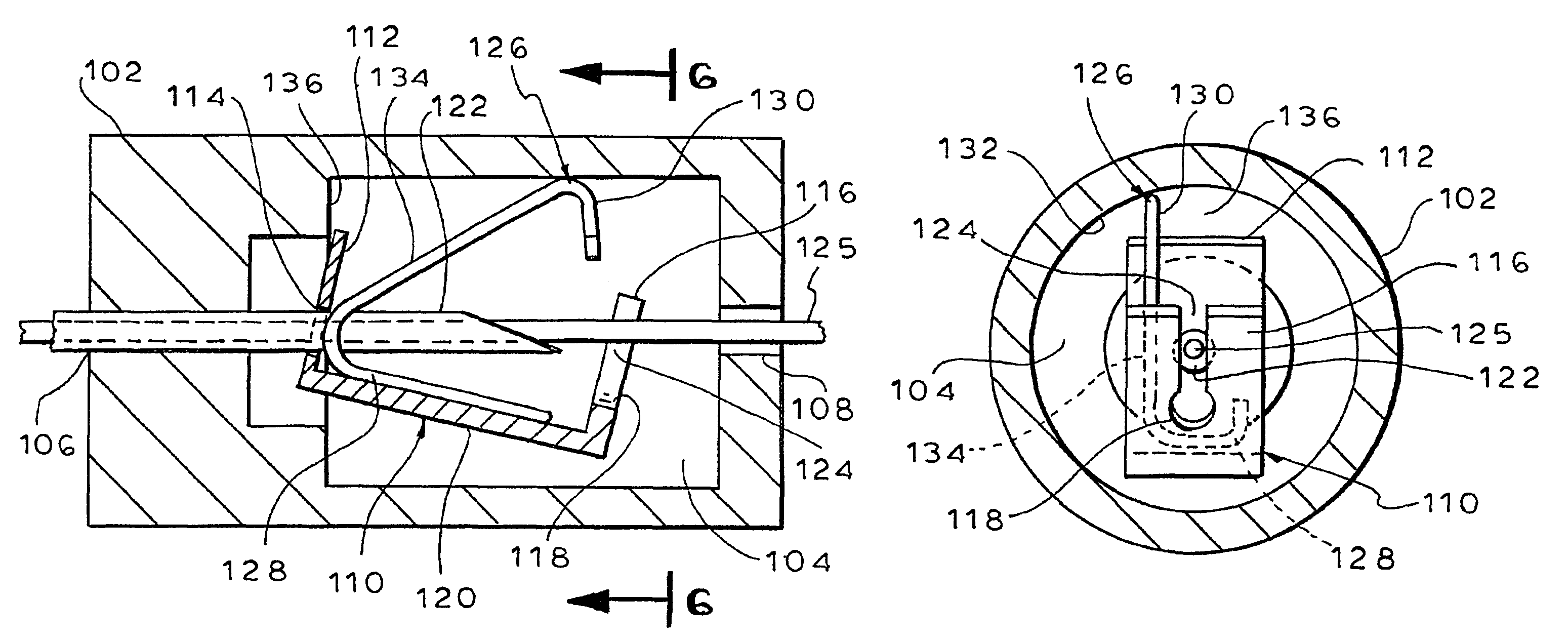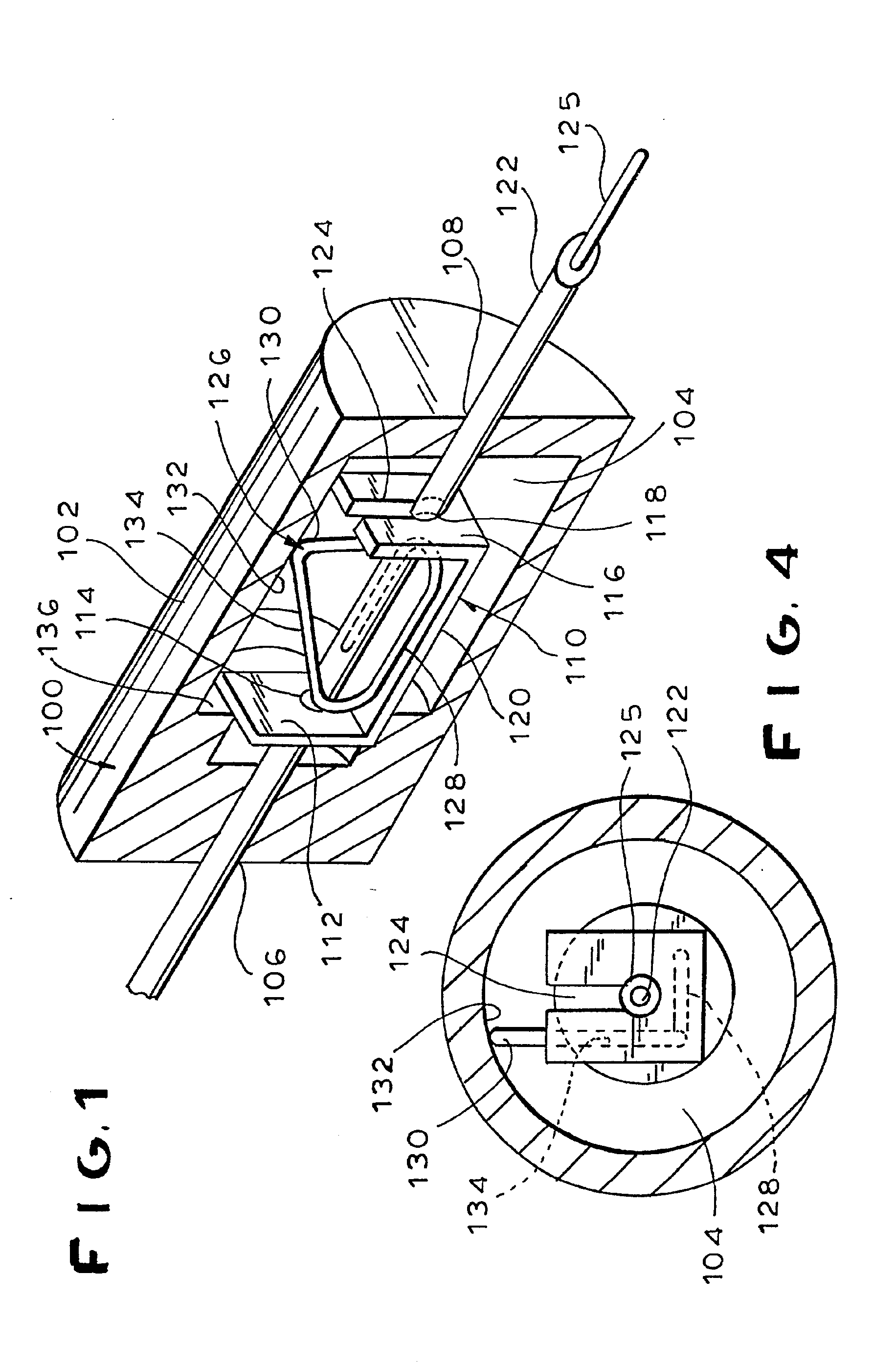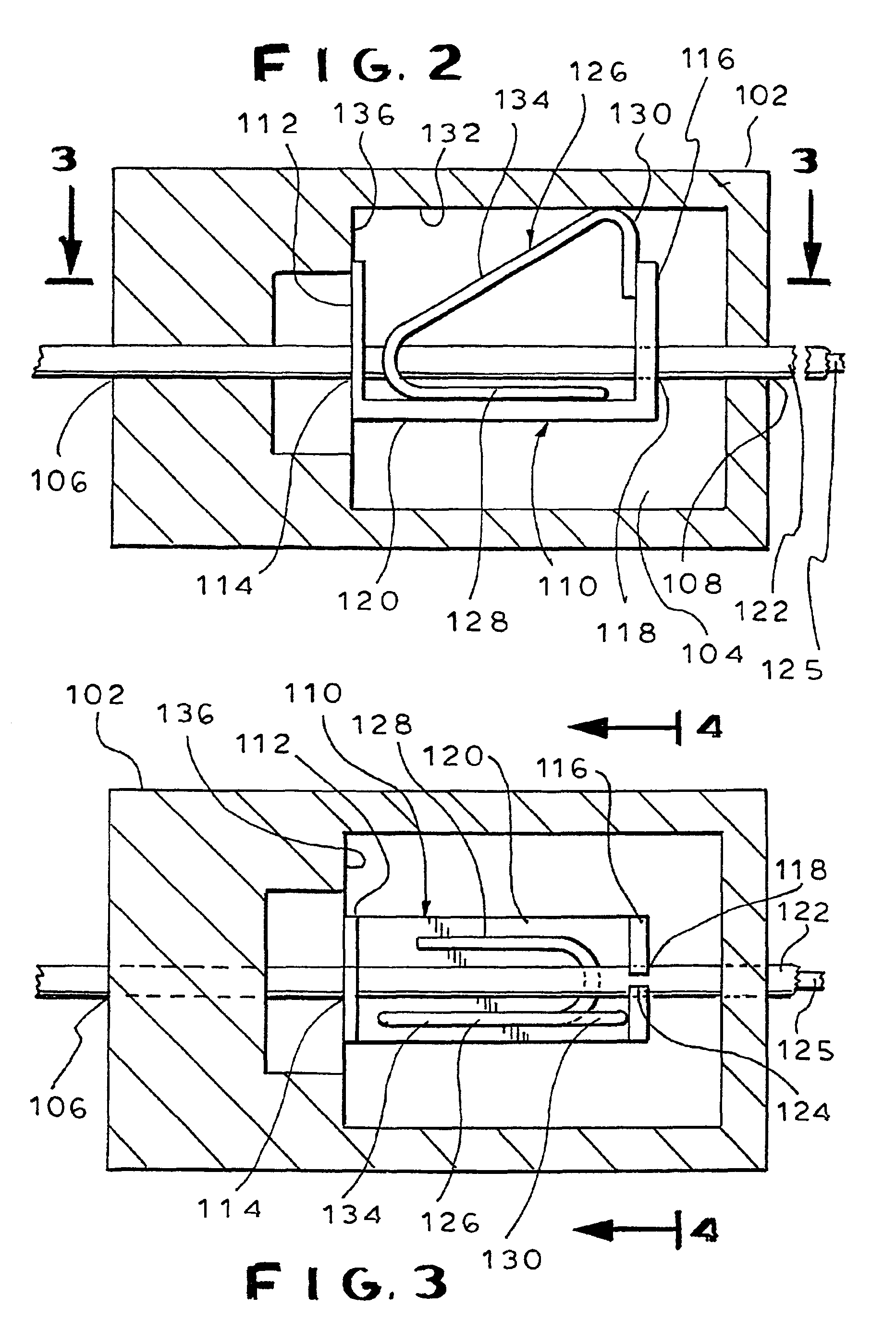Hypodermic needle guard
a technology of hypodermic needles and guards, applied in the direction of guide needles, catheters, infusion needles, etc., can solve the problems of increasing the risk of puncture, increasing the possibility of puncture, and complicated, and achieve the effect of convenient manufactur
- Summary
- Abstract
- Description
- Claims
- Application Information
AI Technical Summary
Benefits of technology
Problems solved by technology
Method used
Image
Examples
Embodiment Construction
[0037]FIGS. 1 through 6 show drawings of an embodiment of a needle guard device, generally designated 100, that has features of the present invention. A housing 102 of the needle guard device 100 has an interior cavity 104 defined therein. The housing 102 is formed with a proximal opening 106 at a proximal end thereof and a distal opening 108 at a distal end thereof.
[0038]A pivoting member, generally designated 110, is located within the interior cavity 104 of the housing 102. The pivoting member 110 has a proximal wall 112 that defines a proximal opening 114. The pivoting member 110 further comprises a distal wall 116 that defines a distal opening 118. The proximal and distal walls 112 and 116 are perpendicularly attached to a base 120 to form a U-shaped pivoting member 110. The pivoting member 110 is preferably formed from a hard metal material, like steel.
[0039]The openings 114 and 118 of the pivoting member 110 are sized to allow a needle 122 to pass therethrough. More specifica...
PUM
 Login to View More
Login to View More Abstract
Description
Claims
Application Information
 Login to View More
Login to View More - R&D
- Intellectual Property
- Life Sciences
- Materials
- Tech Scout
- Unparalleled Data Quality
- Higher Quality Content
- 60% Fewer Hallucinations
Browse by: Latest US Patents, China's latest patents, Technical Efficacy Thesaurus, Application Domain, Technology Topic, Popular Technical Reports.
© 2025 PatSnap. All rights reserved.Legal|Privacy policy|Modern Slavery Act Transparency Statement|Sitemap|About US| Contact US: help@patsnap.com



